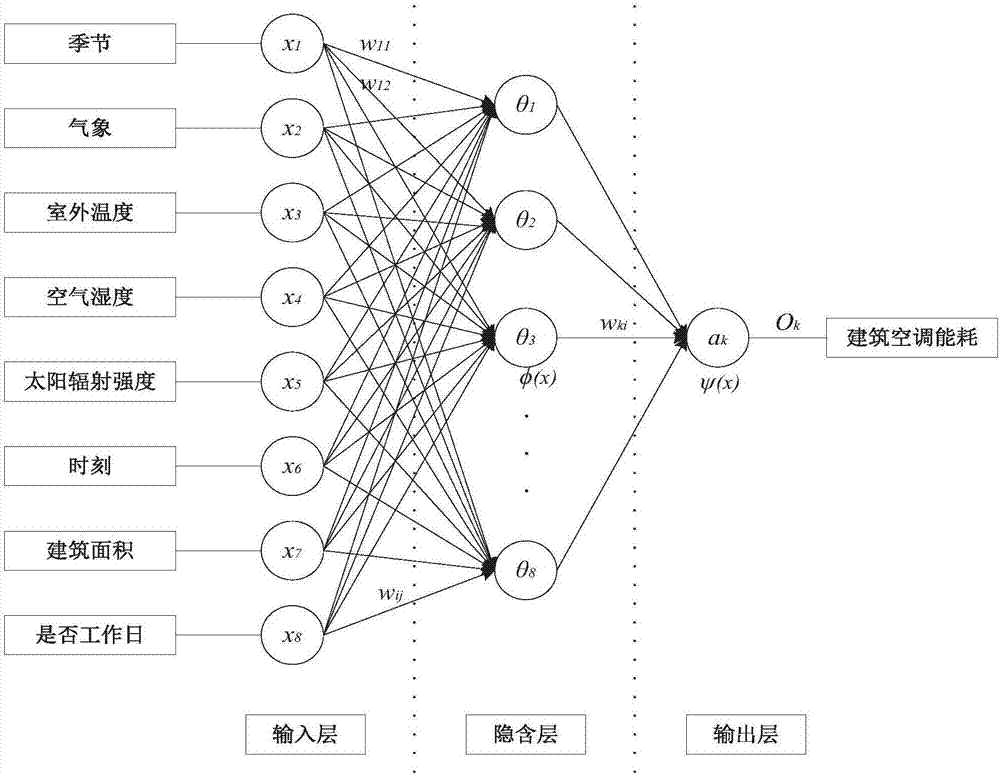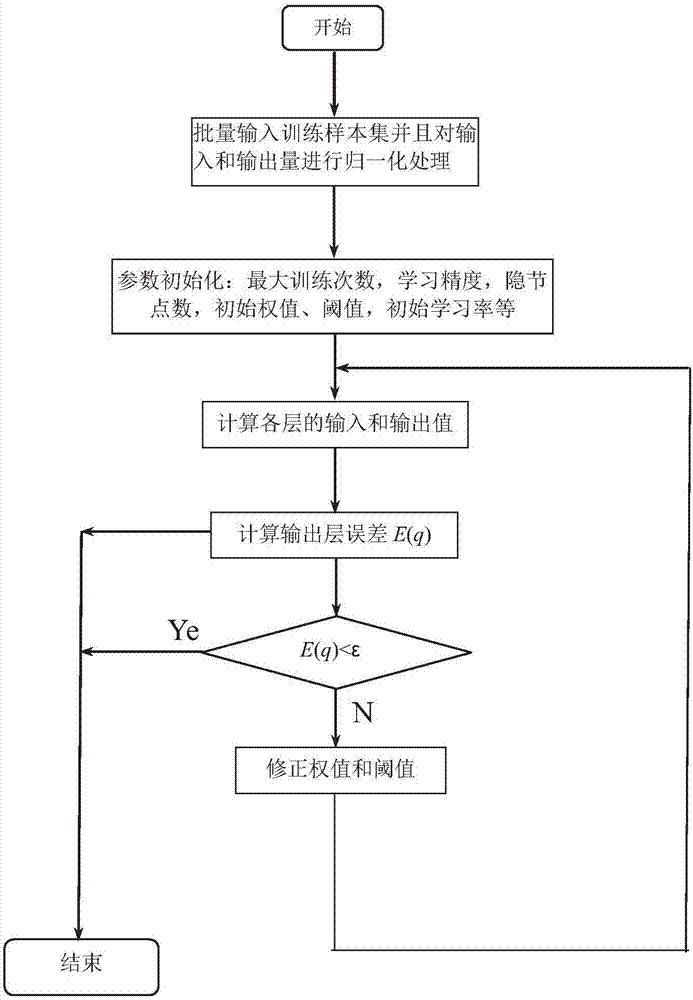Building air-conditioning energy consumption prediction method based on BP neural network model
A BP neural network and prediction method technology, applied in the field of air conditioning energy consumption prediction, can solve the problem of difficulty in implementing large-scale training samples, and achieve the effects of fast large-scale training samples, strong nonlinear mapping ability, and strong robustness.
- Summary
- Abstract
- Description
- Claims
- Application Information
AI Technical Summary
Problems solved by technology
Method used
Image
Examples
Embodiment 1
[0073] combine Figure 1-Figure 4 , this embodiment describes in detail the method for predicting energy consumption of building air conditioners based on BP neural network of the present invention, the flow chart of which is as follows figure 1 As shown, it includes the following steps:
[0074] S11: Analyze the influencing factors of building air conditioning energy consumption;
[0075] S12: According to the impact parameters, collect the sample parameters of air-conditioning energy consumption in historical buildings, and preprocess the sample parameters of air-conditioning energy consumption in historical buildings, and obtain the sample parameters of air-conditioning energy consumption in historical buildings after preprocessing;
[0076] S13: Use BP neural network to establish a building air conditioning energy consumption prediction model according to the dimensions of historical building air conditioning energy consumption sample parameters;
[0077] S14: Using the ...
Embodiment 2
[0185] Such as Figure 6 Shown as its flow chart, this embodiment is on the basis of embodiment 1, after step S15 has increased:
[0186]S16: Regularly evaluate the modeling quality of the building air-conditioning energy consumption prediction model to judge whether the error of the building air-conditioning energy consumption prediction model is within the allowable range. The specific method is: by taking the real-time data of the building as a sample for a period of time, bring it into the trained model simulation to obtain the corresponding predicted value, compare the deviation between the predicted value of the model and the actual air-conditioning energy consumption data, and judge whether the deviation is within the allowable range If it is within the allowable range, the building air-conditioning energy consumption prediction model is available; if it is not within the allowable range, the building air-conditioning energy consumption prediction model is not available...
Embodiment 3
[0190] Such as Figure 7 Shown as its flow chart, this embodiment is on the basis of embodiment 1, after step S15 has increased:
[0191] S17: Regularly collect recent historical building air-conditioning energy consumption and influencing parameters and collect them as new training samples to retrain the building air-conditioning energy consumption prediction model to obtain a building air-conditioning energy consumption prediction model that is more suitable for the current state.
PUM
 Login to View More
Login to View More Abstract
Description
Claims
Application Information
 Login to View More
Login to View More - R&D
- Intellectual Property
- Life Sciences
- Materials
- Tech Scout
- Unparalleled Data Quality
- Higher Quality Content
- 60% Fewer Hallucinations
Browse by: Latest US Patents, China's latest patents, Technical Efficacy Thesaurus, Application Domain, Technology Topic, Popular Technical Reports.
© 2025 PatSnap. All rights reserved.Legal|Privacy policy|Modern Slavery Act Transparency Statement|Sitemap|About US| Contact US: help@patsnap.com



